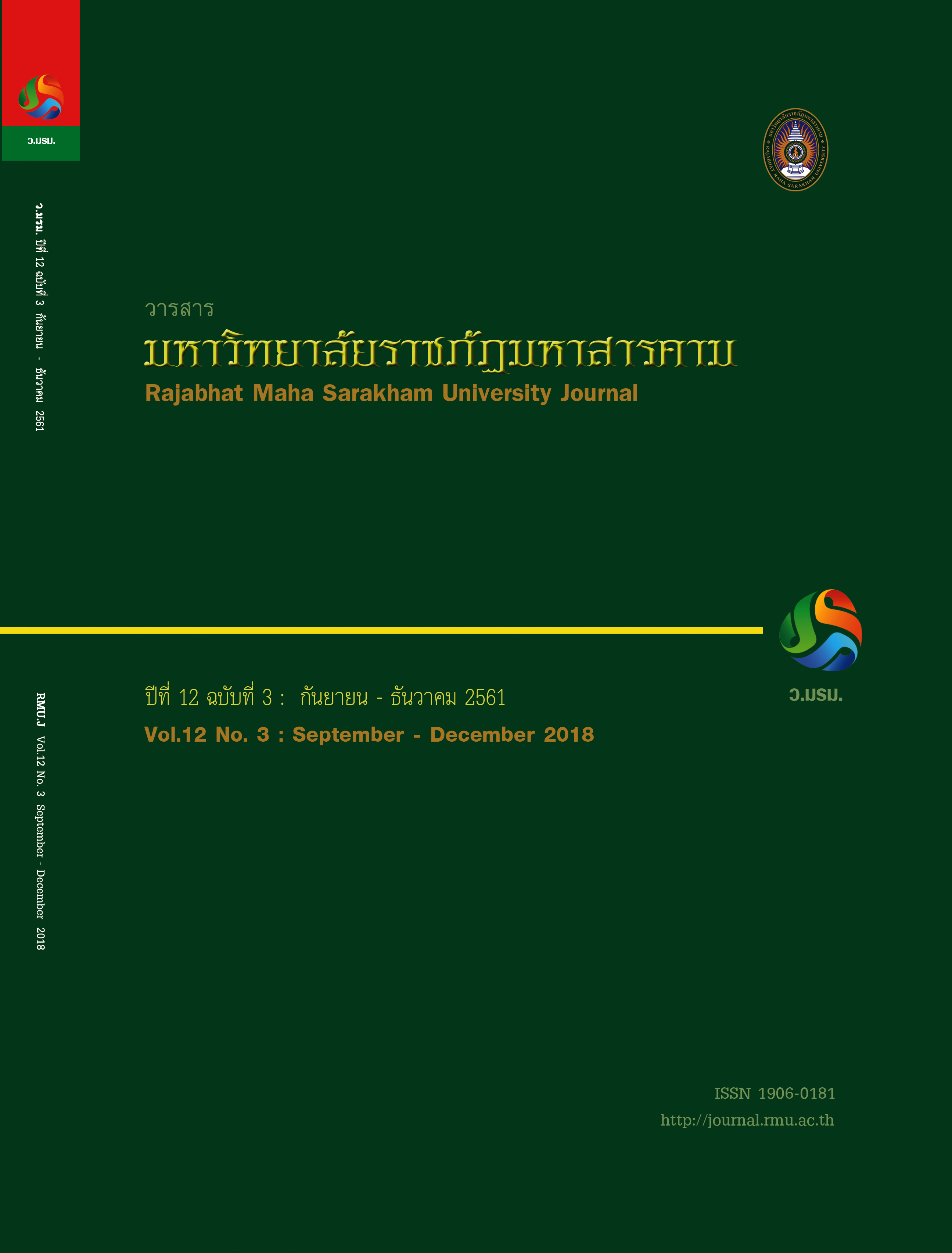สมรรถนะทางด้านการจัดการทรัพยากรมนุษย์และความสำเร็จขององค์กรของโรงพยาบาลเอกชนในประเทศไทย
Main Article Content
บทคัดย่อ
การวิจัยนี้มีวัตถุประสงค์เพื่อศึกษาความสัมพันธ์ระหว่างสมรรถนะทางด้านการจัดการทรัพยากรมนุษย์,ความผูกพันของพนักงาน,การสร้างสรรค์นวัตกรรมและความเชื่อมั่นของผู้มีส่วนได้เสียกับความสำเร็จขององค์กรของโรงพยาบาลเอกชนในประเทศไทย โดยเก็บข้อมูลจากกลุ่มตัวอย่างซึ่งได้แก่ โรงพยาบาลเอกชนในประเทศไทย จำนวน 321แห่ง เครื่องมือวิจัยเป็นแบบสอบถามทางไปรษณีย์ การวิเคราะห์ข้อมูลใช้สถิติเชิงพรรณนา และทดสอบสมมุติฐานโดยการวิเคราะห์ถดถอยแบบพหุคูณ ผลการวิจัยพบว่า 1) สมรรถนะทางการจัดการทรัพยากรมนุษย์มีความสัมพันธ์เชิงบวกกับความสำเร็จขององค์กร 2) สมรรถนะทางการจัดการทรัพยากรมนุษย์มีความสัมพันธ์เชิงบวกกับความผูกพันของพนักงาน 3) สมรรถนะทางการจัดการทรัพยากรมนุษย์มีความสัมพันธ์เชิงบวกกับการสร้างสรรค์นวัตกรรมขององค์กร 4) สมรรถนะทางการจัดการทรัพยากรมนุษย์มีความสัมพันธ์เชิงบวกกับความเชื่อมั่นของผู้มีส่วนได้เสียขององค์กร 5) ความผูกพันของพนักงานมีความสัมพันธ์เชิงบวกกับความสำเร็จขององค์กร 6) การสร้างสรรค์นวัตกรรมมีความสัมพันธ์เชิงบวกกับความสำเร็จขององค์กร 7) ความเชื่อมั่นของผู้มีส่วนได้เสียมีความสัมพันธ์เชิงบวกกับความสำเร็จขององค์กร
Article Details

อนุญาตภายใต้เงื่อนไข Creative Commons Attribution-NonCommercial-NoDerivatives 4.0 International License.
1. บทความที่ลงตีพิมพ์ทุกเรื่องได้รับการตรวจทางวิชาการโดยผู้ประเมินอิสระ ผู้ทรงคุณวุฒิ (Peer Review) สาขาที่เกี่ยวข้อง อย่างน้อย 3 ท่าน ในรูปแบบ Double blind review
2. ข้อคิดเห็นใด ๆ ของบทความที่ลงตีพิมพ์ในวารสารมหาวิทยาลัยราชภัฏมหาสารคาม นี้เป็นของผู้เขียน คณะผู้จัดทำวารสารไม่จำเป็นต้องเห็นด้วย
3. กองบรรณาธิการวารสารมหาวิทยาลัยราชภัฏมหาสารคาม ไม่สงวนสิทธิ์การคัดลอกแต่ให้อ้างอิงแสดงที่มา
เอกสารอ้างอิง
McClelland, D.C., (1975). A Competency model for human resource management specialists to be used in the delivery of the human resource management cycle. Boston: Mcber.
Sakda Siriphattrasophon and Parnthip Thanaphikhuptanon. (2011) “Relatioships Between Percieved Service Quality, Patient Satisfaction And Loyalty : A Case Of Private Hospital In Bangkok. KKU Res. J. (be), 10(2), 160-172.
Barney, J. (1991). Firm resources and sustained competitive advantage. Journal of Management, 17(1), pp. 99-120.
Gratton, Linda and Sumantra, Ghoshal. (2003, February). Managing Personal Human Capital. European Management Journal, 21 (2) : 1-10.
Davenport, T.H. and Prusak, L. Working Knowledge: How Organizations Manage What They Know.Harvard Business School Press, Boston, MA, (1998). Management : anorganizational Capabilities perspective. Journal Management Information System,18(1), 185-214.
DeLong, D.W. & Fahey, L. (2000). Diagnosing Culture Barriers to Knowledge Management. The Academy of Management Executive, 14 (4), 113-127
Watkins,K.E.and Marsick,V.J. (1992). Building theLearning Organization: A New Rolefor Human Resource Developers. Studies in Continuing Education, 4(2).
Arunee Akewongtrakool, (2002). Relationships between personal factors, job involvement, organizational climate, and quality of work life of staff nurses, regional hospital and medical centers, southern region. Master of Nursing Science Thesis : Chulalongkorn University.
Wallapa Boonrod, (2009). Quality of Working Life: Perceptions of Professional Nurses at Phramongkutklao Hospital. Journal of the Medical Association of Thailand, 92(1), Suppl. 1.
Lawless, D.J. (1979). Organizational Behavior.2nd ed. New Jersey: Prentice-Hall,Inc.


